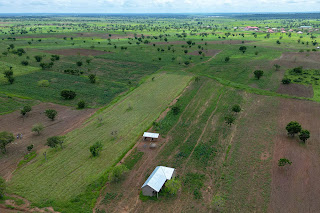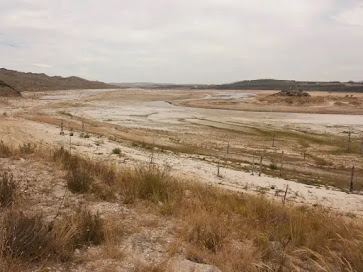How can we change with climate?
Following the challenges triggered by climate change, this post aims to assess the potential fields of adaptation to water and food stressors, to achieve better development.
Different stakeholders have employed diverse strategies, including food aid and finances, safety net systems (water storage), irrigation scheme implementation during drought. According to the International Water Management Institute (2009), allocating water supply from rainy to dry seasons is the fundamental strategy for improving citizen access to water.
Dam as water storage?
People push for the construction of dams to capture surface water, but only a small part of the big dams are located in Africa (less than 2,000 of the 45,000 globally; Hanjra et al., 2009).This strategy could be successful in richer nations that can afford heavy infrastructure. Also, dams are not best option for Africa, as surface water evaporation rates are high in many regions. Although Ghana and Burkina Faso have achieved successful dam models, where many small community have created domestic water supply and household gardens(IWMI, 2009), it may cause floods, disrupt biodiversity around the dams.
Small Scale Storages and irrigation
Small community-built water storage refilled either by groundwater recharge, surface runoff, or rainfall collecting, are beneficial. According to the study (Mideksa et al, 2021), 62.67, 54.33, 20.33, and 17.67 % of households in Ethopia have employed boreholes,shallow wells, hand-dug, and farm ponds respectively, for small-scale irrigation. It benefit reduce reliance on rain-fed agriculture, increase food security as improving crop production and diversity in many regions, such as Ethopia, Uganda and Zimbabwe. Also, it is low-costing in operating and enables communities to manage water for own purposes without having to weigh trade-offs between various managed goals. (Johnston & McCartney, 2010).
Though, small storages are vulnerable to public health risks brought on by vector-borne diseases. A study conducted in Ethiopia (Boelee et al., 2013) found that the haste to construct water storage may endanger already vulnerable African communities.
Crop adaptation
Besides water storage, crop adaptation is another risk-adverse strategy. Studying crops that can withstand a changing climate's heat, drought, waterlogging, and pests is becoming increasingly important (Vermeulen et al., 2012). In light of the decreasing size of agroclimatically favourable regions for crops, such as various grains and maize. Its production might move to higher elevation form Eastern Africa's low altitudes (Niang et al. 2014).
 |
| Figure 1: A fonio field in Chereponi |
Growing drought-tolerant crops like maize, cowpeas, and rice have been produced using traditional plant breeding processes to thrive even when rainfall are insufficient (Ashraf, 2010). They offer several advantages, including increased food yields. Particularly, the superfood fonia is nutrient-rich, filling, and simple to grow in West Africa's poor and arid soil.
However, there are certain difficulties involved. It takes time to breed crops to tolerate drought as it might take an average of five years to introduce novel crops to the market. It might take several years and multiple sites to test the seeds. Another difficulty is that making them accessible to farmers requires a large investment.
Still, adaptations necessitate communication with the public. In reality, it would be feasible to identify the most suitable and long-lasting adaptations by discussing with farmers about their ability to adopt new technology and with customers about their openness to embrace new crop kinds. An example of upgrading seed quality to selected types is a community agricultural project in Malawi. It intends to enhance farmers' knowledge for crop variety identification in the districts of Mzimba, Kasungu, Ntcheu, and Chiradzulu..


Comments
Post a Comment